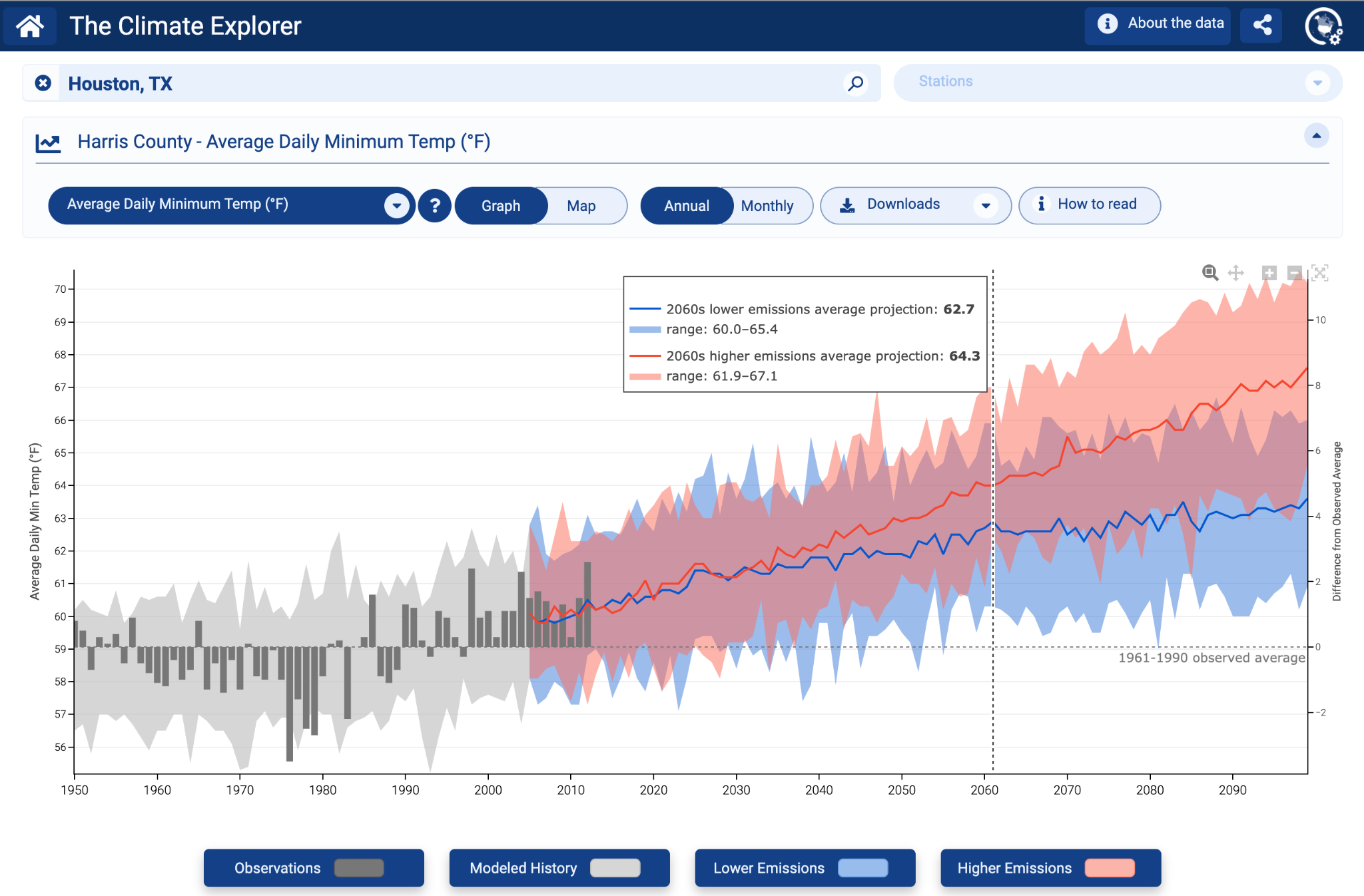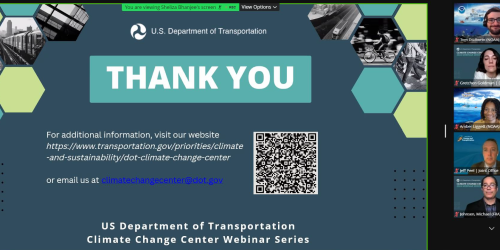

The latest version of the U.S. Climate Resilience Toolkit’s Climate Explorer now offers climate projections for every county in the entire United States. The recent addition of climate projection data for Hawai’i and U.S. island territories in the Pacific Ocean and Caribbean Sea complements the tool’s original contiguous U.S (CONUS) coverage and the addition of data for Alaska in 2020.
New features in the recent update help users read the tool’s graphs and maps to understand conditions projected for future decades. The graphs in the tool now feature dynamic display of values under the user’s cursor. To encourage appropriate use of data, the tool displays decadal averages of projections rather than annual values. Additionally, the map interface lets users make visual comparisons of past and projected conditions for two scenarios. Users can click any county in the maps to see summary statistics for color-coded variables shown on the maps.
New content under the “How to read” button on graphs helps users understand and interpret the various graph elements for CONUS, Alaska, and Hawai’i & U.S. territories. CONUS graphs also have a new line showing long-term average observations from the late 20th century (1961-1990); a new y axis on the right helps users see how projected conditions differ from those experienced late in the last century. Information under About the data and FAQ have also been updated, incorporating comments and answering questions submitted by users.
The Climate Explorer’s team of climate projections experts, tool developers, and user advocates continue working to evolve the tool. Looking to the future, they plan to update the data source to show new, downscaled climate projections from the latest generation of climate models (CMIP6) as they become available.
To provide feedback on any part of Climate Explorer, click “Yes” on the “Want to provide feedback?” button in the lower right of the screen.









